SYRIA
20 – 30 April 2006
Note:
data is presented in French, comments in French and some in English.
All the comments are in French and some in English.
Participants : Aurélien Audevard – Philippe J. Dubois – Jean-Yves Frémont – Guy Flohart – George Olioso – Elise Rousseau – Yvan Tariel – Pierre Yésou.
Editor : Philippe J. Dubois, with the help of Georges Olioso (herpetology).
Route and weather:
JE 20.04 : Departure from Roissy-CDG at 17:20 . Arrival at Malpensa / Milano, Italy, at 19:00. Then departure for Damascus at 22:20.
VE 21.04 : arrival at Damascus, Syria, at 3:00. Taking cars and direction, night (and hard) to Palmyra. Some stops in the desert. Arrival in Palmyra, quick walk in the oasis and palm grove (poor) and visit north to Sed Wadi El Abiad. Sunset at the hotel Citadel (correct) in Palmyra.
Sun and clouds, warm (30 ° C), light westerly wind.
SA 22.04 : visit the Talila reserve (+ antelope paddock), then Douara cliffs where is the only known colony of tawny vultures from Syria. Short visit to the oasis of Arak, east of Palmyra, but too late, alas.
Sun and some clouds, less hot than yesterday, W wind.
DI 23.04 : departure from Palmyra, but a day disturbed by a strong khamsin that carries everything (see below). Quick stop on a temporary pond in the desert near Bir Haba. Arrival at mid-day at Deir Ez Zor. “Tourist” walk around the suspension bridge and east bank of the Euphrates. Sleep at Al Saeed Hotel, very good.
Cloudy in the morning in Palmyra, then the wind and the sandstorm (khamsin) rises. It reaches its climax from 14: 30: the sky turns yellow then red-orange (and darkens strongly), the air is totally dusty. Impossible to make ground, it is almost night!
LU 24.04 : Departure of Deir Ez Zor for Mheimideh (also written “Mhmeidah”). Visit of the site then road to Ar Raqqa. Stopping on a dead arm of the Euphrates (“Sarat el Kasra” in some BirdLife / OSME reports) – Sarat el Kasra (Google Earth), apparently 5-6 km southeast of Alkibar and in the village of Traïf . Then stop at the Halabbieh Fortress, finally drive along the Euphrates – Qaabi- As Sweideh area, until Ar Raqqa. Sleep at the hotel Lazaward (new hotel, very good, opposite that of Karnak, which no longer seems to exist).
Sun and clouds, light NW wind, some drops in the evening at Ar Raqqa.
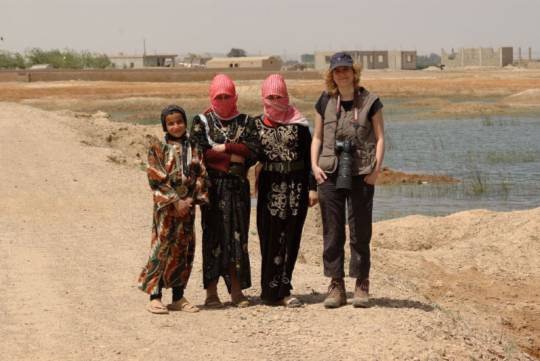
MA 25.04 : departure from Ar Raqqa to join the main Dam of Assad Lake, by the East Bank road. Stop at Ba’ath Lake just below the dam and survey the western portion. Then drive to Aleppo and sleep at Al Faisal Hotel (good) and visit the souks and the Great Mosque.
Sun and clouds, then thunderstorm around noon, wind of W, gray then …
ME 26.04 : visit Al Jabbul Lake all day. Back in the evening on Aleppo (same hotel).
Nice day and clear sun, pretty hot.
J E 27.04 : Aleppo departure to the region of dead cities. Stop at Sergilla and visit the site. Then climb – after a real orienteering through the hills and the Al Ghab region – to Slenfeh. Stops on the ridges before this city at Job Alahmer and especially Job Alghar. Sleep in Slenfeh (Moutain Flower Hotel, good but expensive – but it’s the only one!).
Sun, wind S strong enough (5 BF), fresh mountain.
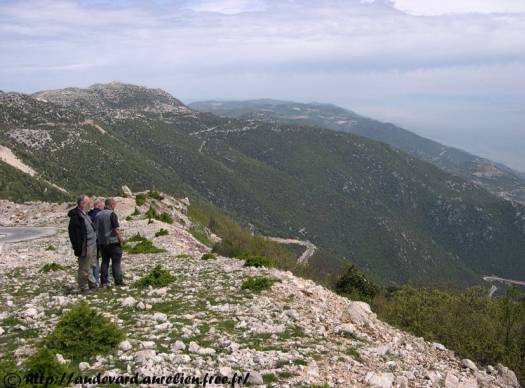
(A. Audevard)
VE 28.04 : morning walk in the area of Job Alghar and surroundings, around Slenfeh also (wooded oak area). Road to Kassab with some stops especially in the forest. Sleep in Kassab (Almokhtar hotel, basic, but Vartan restaurant, excellent).
Sun and clouds, cloudy passage in the morning (some drops) and evening.
SA 29.04 : departure from Kassab and road to Ras Al Basit, on the Mediterranean coast. Long stage then passing by Lattakia, Tartous, the Krac of the Knights (superb), Damascus and road then towards Lebanon towards Bloudan. Sunset at Bloudan (Dalabieh hotel, medium).
Hot, sun, foggy morning mountain, wind of E.
DI 30.04 : Prospecting above Bloudan, Abu Zad and above to the summit (Jebel Ain Ansou – about 2100m). Return to Damascus (difficult in town) and arrive at the International Airport for departure.
Radiant sun in the mountains, moderate wind.

(A.Audevard)
LU 1.05 : departure at 4:00 (HL) for Malpensa (Italy). Arrival at 7:50 (HL) then departure at 9:30 for Paris-CDG. Check in around 11:00
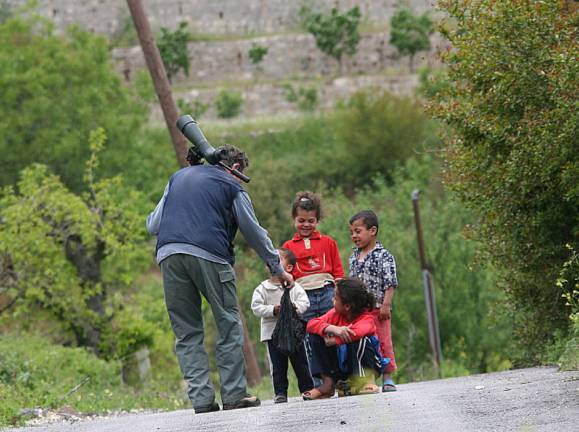
(E. Rousseau)
Travel : Hire car (Hertz) Ford old and a little “big calves”, not really made for the desert …
Acknowledgments : They go first to Nidal Issa who awakened us to this extraordinary country and answered all our questions, always with kindness. Thanks also to Dave Murdoch for his invaluable information (although we could not meet him on the spot), and finally to Ahmed Abdullah from the Talila Reserve (Palymre) who guided us on this site and at Jabul Lake (Fortunately!)
SITES:
Palmyra = oases and palm groves no doubt interesting, but nothing special on the day of our visit (a lot of wind). The ruins are superb, but did not contain any particular birds (unlike the visit of Nidal Issa et al. , In September 2005).
Sed Wadi El Abiad= dam (= sed) 15-20 km north of Palmyra. Widely lined with reeds and tamarisk bushes. No doubt very interesting, but interest “truncated” because we visited on a Friday, day off. There are so many families around the lake, frequently disturbing the few birds present. A visit another day and at the end of the day (or beginning) would probably have given more. We are very close to the relict colony of bald ibis, who sometimes come here to drink.
Talila Reserve : 17km east of Palmyra. Regulated access reserve. 40 000 ha of steppe preserved from intensive livestock grazing. Steppe at Artemisia , Calligonum and Achilleamainly. Some tamaris, micro-oasis at the entrance to the reserve.
Douara : wide cliffs where vultures seem very scattered …
Arak : oasis that seems very good, 25km east of Palmyra. Alas, visited too late on the 22nd and 23rd, the violent wind prevents us from making a stop …
Mheimideh : superb small environment, mixing at the same time marshes with sedges and reeds, reedbeds, and ponds more or less remodeled by the man . A real nature reserve that does not say its name! Sarat el Kasra: one of the many oxbow rivers bordering the Euphrates. Each of them seems exciting, but often difficult to access …
Halabbieh : ancient fortress. Archaeological site; very nice view of the Euphrates and the plain.
Qaabi- As area Sweideh : along the Euphrates, a small road to take immediately right after passing the bridge in front of the fortress of Halabbieh. The road winds between areas of low cliffs (and full of kestrels!) And crops, not far from the river.
Ba’ath Lake : downstream from Assad Lake and along the Euphrates, the lake seems very good. Vast reedbeds, some wetlands, but not easy to access (especially the eastern sector). It can be seen from the railway line that cuts the lake downstream (D. Murdoch).
Lake Al Jabbul: huge lake, partly salty, but with parts returned to fresh water. Quick visit of the SW portion and area of large reed beds and small marshes in the extreme south-east. Then, from the village of Al Jabbul, visit the central part (restricted access) along the dike to an island with a small summit from which one dominates the whole lake. The site is extraordinary and would deserve many days of prospection …
Sergilla : beautiful Roman ruins very well preserved in a landscape of “Eastern Mediterranean”.
Job Alghar : summit ridges, towards Jebel Nabi Matta (alt .: 1600m). Area of ”maquis” where dominates some Aleppo pines and lean cedars of Lebanon, as well as strawberry trees in particular (nest the
Kassab : a small village on the Turkish border, in the Aqra Mountains, with a very strong Armenian community. Perched in the mountains. Surrounded by extensive crops, lean, oak thickets (cork?), Arbutus, and various bushes. Heterogeneous and beautiful environment.
Bloudan (and Abu Zad) : This is the region of Anti-Lebanon. Mountain village. The environment seems to have been very much changed. Indeed there are many plantations of fruit trees (apricots, almond trees) above the village and up high mountain. The birds are therefore few and some (larkspur, pink-winged rosin) are either very localized or missing. In addition, the urbanization is galloping, Bloudan being a popular summer resort … Snow tracks to the peaks!
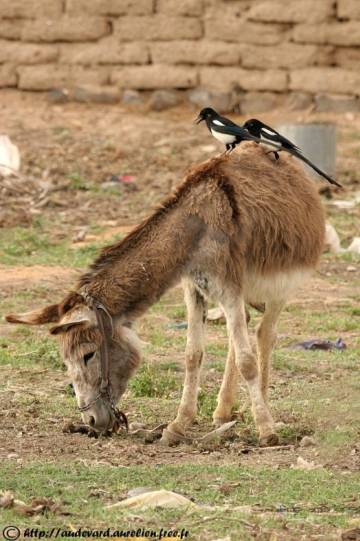
(A. Audevard)
BIRDS
Systematic List / Systematic List
W. Baumgart = Birds of Syria – 1995, OSME.
Common Shelduck Tadorna tadorna (Common Shelduck)
2 on the 26th at Al Jabbul Lake.
Possible breeder there.
Whistling Duck Anas penelope (Eurasian Wigeon)
A male in Sed Wadi El Abiad on the 21st (!) …
Gadwall Gadwall Anas strepera (Gadwall)
A cp. on the 24th, on the Euphrates, in the Qaabi- As Sweideh sector.
Teal Anas crecca (Common Teal)
4+ on the 24th at Mheimideh, 40 in all on the 26th at Al Jabbul Lake.
Mallard Anas platyrhynchos (Mallard)
2 males on the 21st at Sed Wadi El Abiad, 1 fem. with young people and 4-5 ind. on the 24th at Mheimideh, 15th on the 26th at Al Jabbul Lake.
Not mentioned as breeder in Syria by Baumgart …
Pintail Anas acuta (Pintail)
30+ 26th at Lake Al Jabbul … Late winterers.
Teal summer Anas querquedula (Garganey)
7 on the 23rd at Bir Haba, then on the 24th, the 10th at Mheimideh, 2 at Sarat el Kasra, 43 on the Euphrates in the Qaabi- As Sweideh sector, 10+ on the 26th at Al Jabbul Lake.
Northern Shoveler Anas clypeata (Northern Shoveler)
24, 6 at Mheimideh and 7 at Sarat el Kasra, then 26, at Al Jabbul Lake, counting 5.650 ind. in big bands!
Very interesting number at Al Jabbul lake for a so late date. Probably much more there earlier in the season.
Marbled Teal Marmaronette angustirostris (Marbled Duck)
6-7 at Mheimideh on the 24th, total of 40 ind. on the 26th at Al Jabbul Lake.
From behavior, likely breeders there …
Red-haired Netta rufina (Red-crested Pochard)
50-60 birds on the 26th at Lake Al Jabbul, among the coots.
Common Pochard Aythya ferina (Common Pochard)
2 fem. at Mheimideh on the 24th, 50th, 26th at Al Jabbul Lake.
Ferruginous Aythya nyroca (Ferruginous Duck)
8 at Sed Wadi El Abiad on the 21st (breeder?), 15+ on the 24th at Mheimideh and 50+ on the 26th at Al Jabbul Lake.
Breeds certainly at Mheimideh and Al Jabbul Lake (courtship, holding territory, etc.)
White-headed duck Oxyura leucocephala (White-headed Duck)
At Mheimideh on the 24th, a couple and 2 males (ad and imm), 30 ind. on the 26th at Al Jabbul Lake.
Known as breeder at Mheimideh, but from behavior at Lake Al Jabbul too.
Partridge choukar Alectoris chukar (Chukar Partridge)
Cree ent. on the 24th at Halabbieh (GF et al.), one on the 27th at Job Alghar (PY), 3 noted in the morning above Bloudan (Abu Zad).
Francolin Black Francolinus Francolinus (Black Francolin)
A well-known doctor (repasses) on the 24th in the Qaabi- As Sweideh sector, 2 chteurs the next day on Ba’ath lake, 2 others on 26th at Al Jabbul lake (JYF et al.).
Wheat quail Coturnix corturnix (Quail)
A hunter on the 25th at Ba’ath Lake, one on the 26th at Al Jabbul Lake (GO et al.).
Little Grebe Tachybaptus ruficollis (Little Grebe)
3 21st at Sed Wadi El Abiad, 15-20 + 24th at Mheimideh, 25th at Ba’ath Lake. Songs are ent. on these sites, also singers in Al Jabbul (along the dike, GF and PY)
Great Crested Grebe Podiceps cristatus (Great-crested Grebe)
2+ at Mheimideh on the 24th, one at Ba’ath Lake on the 25th (AA), 200 ind. on the 26th at Al Jabbul Lake.
In Al Jabbul, an ad. has a leucic plumage, almost complete, except the back of the back which is brown-beige!
No breeding proof at Al Jabbul lake (summering birds?)
Great Cormorant Phalacrocorax carbo (Cormorant)
One on the 21st at Sed Wadi El Abiad (AA, GO), one on the 26th at Al Jabbul Lake.
Pygmy Cormorant Phalacrocorax pygmeus (Pygmy Cormorant)
An ad. at Ba’ath Lake on the 25th …
The winterers are now gone.
White Pelican Pelecanus onocrotalus (White Pelican)
33 (32 + 1) on the 26th at Al Jabbul Lake.
Squacco Ardeola ralloides (Squacco Heron)
4 on the 21st at Sed Wadi El Abiad, one on the 23rd at Deir Ez Zor, then 24th, 2nd at Mheimideh, and 3rd at Sarat el Kasra on the 26th at Lake Al Jabbul.
Cattle Heron Bulbucus ibis (Cattle Egret)
An ad. PN on the 24th at Mheimideh.
A rather eastern occurrence.
Little Egret Egretta garzetta (Little Egret)
11 on the 21st at Sed Wadi El Abiad, 13 on the 24th at Mheimideh, and 5 on the Euphrates that day, 10-15 on the 26th at Lake Al Jabbul.
Great Egret Ardea alba (Great White Egret)
2 on the 24th at Mheimideh and a few dozen at Al Jabul on the 26th.
Gray Heron Ardea cinerea (Gray Heron)
4+ on the 21st at Sed Wadi El Abiad, one at Halabbieh and another at Mheimideh on the 24th, 5+ on the 26th at Al Jabbul Lake, 1 on the 29th at Ras al Basit.
Purple Heron Ardea purpurea (Purple Heron)
On the 24th, one at Mheimideh and one at Halabbieh, one at Ba’ath Lake on the 25th and 3rd the next day at Al Jabbul Lake.
Night Heron Nycticorax nycticorax (Night Heron)
2 ad. at Sed Wadi El Abiad on the 21st, 25+ in flight over the Euphrates at Deir Ez Zor on the 23rd.
Northern bittern Botaurus stellaris (Common / Eurasian Bittern)
One in flight on the 26th at Al Jabbul Lake, above a reed bed
Occasional in Syria (Baumgart)? …
Little Bittern Ixobrychus minutus (Little Bittern)
A male in broad daylight, migrates near Palmyra on the 21st, fighting against the wind, a male on the 24th at Mheimideh (JYF), one near Ar Raqqa on the 25th (AA et al.), Finally a 26 at Al Jabbul Lake (PJD, GO).
Black Stork Ciconia nigra (Black Stork)
One in migr. on the 24th at Halabbieh, then another migrant on the 29th at Issawieh (Mediterranean coast) (PJD).
White Stork Ciconia ciconia (White Stork)
One laid on 21st at Sed Wadi El Abiad, 2nd on 26th at Job Alghar (GF), finally on the 29th, a beautiful migration with 15 south of Issawieh, 720 ind. (450 + 270) north of Lattakia, 4 south of this city and 420 south of Tartous, and 20 in Hdida (towards Homs) the same day.
Glossy Ibis Plegadis falcinellus (Glossy Ibis)
2, far, 26th to Al Jabbul Lake (AA, PJD).
White Spoonbill Platalea leucorodia (Eurasian Spoonbill)
55 ind. in all, on the 26th at Al Jabbul Lake, in small groups.
Flamingo Phoenicopterus ruber (Greater Flamingo)
Hundreds noted on 26th at Al Jabbu Lake
No breeding activity noted
Honey Buzzard Pernis apivorus (Honey Buzzard)
28, 30 to Job Alghar and one in migr. to Kassab, then 29, 2 to Ras al Basit, 2 north of Lattakia and 12 to S of Tartous, all in migration.
Black Milk Milvus migrans (Black Kite)
The 21st in Palmyra 6 including 5 ind. in migr., 4-5 the 22 to Douara, 2 to Palmyra and one to Deir Ez Zor the 23, qqs the 24 to Halabbieh and sector Qaabi- As Sweideh.
Egyptian Vulture Neophron percnopterus (Egyptian Vulture)
21, 2 at Sed Wadi El Abiad and 2 cp. in the cliffs to the north of Palmyra, 2 to Douara on the 22nd.
Griffon vulture Gyps fulvus (Griffon Vulture)
The colony of Douara (apparently 30 cp. Strong), seems less numerous at our visit on 22: 6-7 rated farmers.
The single colony known in Syria.
Short-toed snake eagle Circaetus gallicus (Short-toed Eagle)
The 21st, one in migr. in Sed Wadi El Abiad and 2 others in N of Palmyra, 2 in migr. on the 24th at Halabbieh, one at Al Bara le 27 (PY), one at Slenfeh on the 28th and 29th, 2 at Issawieh, and one at N of Lattakia.
Marsh Harrier Circus aeruginosus (Marsh Harrier)
A male, obviously in migr. after Damascus (desert) on the 21st, then the 24th, 3+ in Mheimideh and 3+ in migr. at Halabbieh, the next day at Ba’ath Lake, also 3+ ind. at Al Jabul on the 26th (possibly breeders)
Pale Harrier Circus macrourus (Pallid Harrier)
1 fem. A2 at Talila on the 22nd, hunting in the desert, another of the same age on the 24th at Sarat el Kasra, finally, a 3rd on the 28th, in migr., At Kassab (PJD, JYF).
It is obviously the very end of the passage … The silhouette, the type of flight, the facial mask are “safe” elements for the identification …
Butternut Circus pygargus (Montagu’s Harrier)
On the 22nd, net migration with 7 ind. Talila (4+ males, 3 fem, 2 A2), same as 23 with 10-12 + ind. in migr. in the desert (and the storm) between Palmyra and Deir Ez Zor, a male on the 24th near Sarat el Kasra, a fem. to Aleppo on the 25th and a male to Baath Lake that day.
European Sparrowhawk Accipiter nisus (Eurasian Sparrowhawk)
Migratory Qqs: 3 in migr. The 24th at Mheimideh, one in migr. in Kassab on the 28th and the 29th, one in the north of Lattakia and one male and one female in the Krac of the Knights.
Short- tailed Sparrow Accipiter brevipes (Levant Sparrowhawk)
100 + 22 at the entrance of Talila, take off trees where they had obviously spent the night (beautiful obs.), Then a male in migr. at Mheimideh on the 24th (PJD et al.), finally a group of 20 on the 29th at N of Lattakia.
Russian Buzzard Buteo buteo vulpinus (Steppe Buzzard)
21 in Palmyra, 12+ in migr, 3 above the city and 2 at the dam, as well as 3 at Sed Wadi El Abiad; the 22, 10 to Talila and 50 in migr. towards Douara, some 23 between Palmyra and Deir Ez Zor, a small passage along the Euphrates on the 24th, still another in migr. on the 28th in Kassab and 12 in migr. in Bloudan on the 30th (PJD).
The passage continues again.
Buteo rufinus fierce buzzard (Long-legged Buzzard)
At least one on 21 at N of Palmyra, 2 on 22 at Talila, 3+ turn over Zalabieh on 24 (local breeder), 3+ between Al Bara and Al Ghab on 27, one at Slenfeh and 3 at Kassab on 28, one at the Krac of the Knights on the 29th.
Spiny Eagle Aquila pomarina (Lesser Spotted Eagle)
An ad. in migr. On the 22nd in Douara, another ad. in migr. on the 24th at Mheimideh (GF, JYF), another, apparently migrating on the 28th at Kassab, finally at Sokas on the 29th.
End of passage …
Steppe eagle Aquila nipalensis (Spotted Eagle)
21 an A4 at the dam of Palmyra and a subad. in migr. to the north of this city; on the 22nd, a subad in Talila and an A2 in migr. in Douara, finally an A4 on the 30th in Bloudan (PJD, JYF, PY).
Booted Eagle Hieraaetus pennatus (Booted Eagle)
An ind. in a troop of birds of prey on the 22nd to Douara, an ind. clear in migr. the 24 above Sarat el Kasra, another clear migr. on the 28th at Kassab …
Osprey Pandion haliaetus (Osprey)
One in migr. The 21st in Palmyra (JYF).
Lesser kestrel Falco naumanni (Lesser Kestrel)
40 ind. on the evening of the 21st, they try to land on a relay antenna in Palmyra, despite the wind, a male the next day at Talila; the 23, a male in Palmyra and 15+ to Deir Ez Zor (GF et al.), on the 24th, a lot of birds noted: 12 in Sarat el Kasra, 25+ in Alkibar, on the sons, a dozen in Halabbieh , then several dozens of nesting pairs in the low cliffs (paradont, mating, nesting birds), not far from the Euphrates in the Qaabi- As Sweideh area, as well as 25, two colonies (nbx pairs) on both shores bordering the Lattakia. One male in Silma on 28 (JYF), another male on 30 in Bloudan.
Euphrates, at least between lake Asad and Halabbieh.
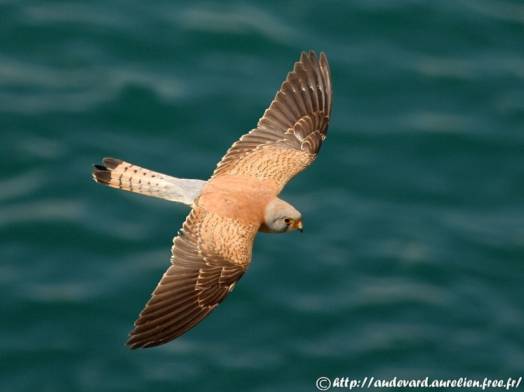
(A.Audevard)
Common Kestrel Falco tinnunculus (Common Kestrel)
21, 2 at Sed Wadi El Abiad, another towards Palmyra, 2 on the 22nd at Talila, a fem. on the 24th at Halabbieh, 1 fem. on the 26th at Al Jabbul Lake, a male and an em. on the 28th at Kassab, a cp. the next day at the Krac des Chevaliers, 2 on the 30th at Bloudan.
Hawk Falco columbarius (Merlin)
2 including a male on the 26th at Al Jabbul Lake (migratory?).
Falcon kelp Falco vespertinus (Red-footed Falcon)
A male E1 on the 24th in migr. to Deir Ez Zor (PJD, JYF et al.), a male on the 27th at Job Alghar (YT).
Falcon hawk Falco subbuteo (Hobby)
One on 25 Arak Raqqa (AA, PJD), one near Silma on the 28th, one at the Krac of the Knights the next day.
Water Rallus aquaticus (Water Rail)
One on the 21st at Sed Wadi El Abiad (GO), one at Mheimideh on the 24th (AA), an ent. on the 25th at Ba’ath Lake (PJD), qqs ent. on the 26th at Al Jabbul Lake.
Records from late April are probably related to breeders.
Corncrake Crex crex (Corncrake)
One on the 21st at Sed Wadi El Abiad (PY).
Common Moorhen Gallinula chloropus (Moorhen)
One on the 21st at Sed Wadi El Abiad, 2+ at Mheimideh and one at Deir Ez Zor on the 24th, on the 25th at Ba’ath Lake, on the 26th at Al Jabbul Lake.
Sultana longfin Porphyrio porphyrio (Purple Gallinule)
One on 24 at Mheimideh, 5+ on 25 at Ba’ath Lake, several tens (30+) on 26 at Al Jabbul Lake.
Subspecies caspius with gray-bluish head.
Breeding in these localities: courtship, song and calls, chase, etc …
Coot Fulica atra (Common Coot)
30+ on the 21st at Sed Wadi El Abiad, 100 on the Euphrates at Deir Ez Zor on the 23rd, tens on the 24th at Mheimideh, some hundreds on the 25th at Ba’ath Lake, thousands still present on the 26th at Lake Al Jabbul. one on a dam lake south of Ras al Basit on 29 (GO).
White Stilt Himantopus himantopus (Black-winged Stilt)
12 on the 21st at Sed Wadi El Abiad, 3 on the 23rd at Bir Haba, 40 at Mheimideh and 3-4 at Sarat el Kasra on the 24th, some tens on the 26th at Al Jabbul Lake.
Pied Avocet Recurvirostra avosetta (Avocet)
40 on the 26th at Al Jabbul Lake.
No particular sign of breeding …
Creeping Oudicnemus Burhinus oedicnemus (Stone-Curlew)
One seen and another ent. on the 22nd at Talila.
Courvite isabelle Cursorius cursor (Cream-colored Courser)
One to Palmyra on the 21st (GF et al.), 6 in all on the 22nd at Talila and one near Douara (JYF et al.).
Collared Pratincole Glareola pratincola (Collared Pratincole)
5 in migr. on the 25th in Sarat el Kasra.
Black-winged Pratincole Glareola nordmanni (Black-winged Pratincole)
One on the 24th at Mheimideh, is migrating (AA, GF, JYF).
Only the second Syrian record?
Little Ringed Plover Charadrius dubius (Little Ringed Plover)
2 at Sed Wadi El Abiad on the 21st, 5th at Bir Haba on the 23rd and finally 2 on the 26th at the Al Jabbul Lake (GF).
Great Ringed Plover Charadrius hiaticula (Great Ringed Plover)
2 ad. on the 23rd at Bir Haba (desert), 3+ the next day at Sarat el Kasra, 4th the 26th at Al Jabbul lake.
Passage inside, in small numbers.
Collar Plover Charadrius alexandrinus (Kentish Plover)
A cp. on the 23rd at Bir Haba, 4th the 24th at Sarat el Kasra, dozens (probably breeders) at Lake Al Jabbul.
Plover of Leschenault Charadrius leschenaultii (Greater Sand Plover)
3 of which 2 in PN in the steppe at Talila on the 22nd.
The birds have a rather strong bill and are probably subspecies crassirostris (birds of passage).
Rammed Lapwing Vanellus spinosus (Spur-winged Lapwing)
20+ on the 24th at Mheimideh, and farther north on the Euphrates, 10+ on the 26th at Al Jabbul Lake.
Breeders …
White-tailed Lapwing Vanellus leucurus (White-tailed Lapwing)
9 ind. very confined to the extreme southeastern part of Al Jabbul Lake.
One nest with 4 eggs found, at least 4 pairs here. No birds seen at Mheimideh (!?).
(G.Olioso) | (G.Flohart) |
Northern Lapwing Vanellus vanellus Northern Lapwing
2 ind. on the 26th at Al Jabbul Lake.
Late winterers.
Little Stint Calidris minuta (Little Stint)
12 on the 21st at Sed Wadi El Abiad, 25 on the 23rd at Bir Haba, 7-8 on the 24th at Mheimideh, 4-5 the same day at Sarat el Kasra, and on the 26th at Lake Al Jabbul.
Temminck’s Sandpiper Calidris temminckii (Temminck’s Stint)
2 on the 23rd at Bir Haba, 3 the next day at Mheimideh, on the 26th at Al Jabbul Lake (JYF).
Coconut sandpiper Calidris ferruginea (Curlew Sandpiper)
A first summer on the 21st at Sed Wadi El Abiad, ad. on the 23rd at Bir Haba …
Fighter Philomachus pugnax (Ruff)
10+ on the 23rd at Bir Haba, 70+ on the 24th at Mheimideh and 20+ this day at Sarat el Kasra,, 1,000+ on the 26th at Al Jabbul Lake.
Snipe Gallinago gallinago (Common Snipe)
6-7 on the 21st at Sed Wadi El Abiad, one on the 24th in the Qaabi- As Sweideh sector (on the Euphrates), 5+ on the 26th at Al Jabbul Lake.
Black-tailed Godwit Limosa limosa (Black-tailed Godwit)
One on the 24th in the Qaabi- As Sweideh sector (rice field), one on the 26th at Al Jabbul Lake.
Red -breasted barley Limosa lapponica (Bar-tailed Godwit)
One on the 24th at Mheimideh …
Apparently occasional in Syria …
Harlequin Knight Tringa erythropus (Spotted Redshank)
10+ on the 24th at Mheimideh (ad PN, especially).
Redshank Tringa totanus (Redshank)
One on the 24th at Sarat el Kasra, 4th on the 26th at Al Jabbul Lake (YT, PY).
Stagnatile Knight Tringa stagnatilis (Marsh Sandpiper)
They were together on the 21st in Sed Wadi El Abiad, on the 23rd in Bir Haba, on the 24th in Mheimideh and on the 24th in Sarat el Kasra on the 26th at Lake Al Jabbul.
Negotiating Knight Tringa nebularia (Greenshank)
On the 24th, one in Sarat el Kasra and four in the Qaabi- As Sweideh sector (Euphrates), on the 26th at Al Jabbul Lake.
Knight culprit Tringa ochropus (Green Sandpiper)
5 on the 21st at Sed Wadi El Abiad, 1+ on the 23rd at Bir Haba, 2 near Sarat el Kasra on the 24th, and on the 26th at Al Jabbul Lake.
Sylvan Knight Tringa glareola (Wood Sandpiper)
3 on the 21st at Sed Wadi El Abiad, 8+ on the 23rd at Bir Haba, qqs at Mheimideh and 20+ in the Qaabi- As Sweideh sector (rice fields) on the 24th, some dozens on the 26th at Al Jabbul Lake.
Gurnard Knight Actitis hypoleucos (Common Sandpiper)
7-8 on the 21st at Sed Wadi El Abiad, on the 23rd at Bir Haba, on the Euphrates in the Qaabi- As Sweideh sector on the 24th, on the 25th at Ba’ath Lake, and the next day at Al Jabbul Lake.
Phalarope Phalaropus lobatus (Red-necked phalarope)
One male on the 21st at Sed Wadi El Abiad, another on the 23rd at Bir Haba (desert).
Only the 4th or 5th Syrian record ??
Mediterranean Gull Larus melanocephalus x -headed Gull (Mediterranean x Black-headed Gull)
24, an A3 (3 cy), observed and photographed with Rieux in the Qaabi- As Sweideh sector.
Higher on legs than the mongrels, beak stronger, thicker, more red. RPs have significantly less black than Rieux. Pale gray back.
Black-headed Gull Larus ridibundus (Black-headed Gull)
On the 24th, one near Deir Ez Zor and 6+ in a rice field in the Qaabi- As Sweideh area, 40 on the 26th at Al Jabbul Lake.
Slender-billed gull Larus genei (Slender-billed Gull)
3 ad. on the 24th at Mheimideh, 3 in flight on the 25th at Lake Ba’ath, finally, total estimated at 5 to 6,000 ind. 26th at Al Jabbul Lake
Curiously, not recorded in high numbers at Al Jabbul by Baumgart. Possibly important interannual variations in numbers? This species could certainly be found in Lake – some birds displaying (otherwise there are only migrants …).
Siberian Gull Larus heuglini (Siberian Gull)
20+ in migr. to the N on the 25th at Ba’ath Lake.
Astonishment, only birds of 2 or 3 years, except two ad …
Armenian Gull Larus armenicus (Armenian Gull)
Perhaps some birds on the 25th at Lake Ba’ath, but without certainty (seen in flight, from a distance, imm.).
Yellow-legged Gull Larus michahellis (Yellow-legged Gull)
2 ad. on the 29th at Ras al Basit, at sea.
Siberian tern Sterna nilotica (Gull-billed Tern)
The 24, 11 in migr. and 2 asked in Mheimideh and 21 asked in Sarat el Kasra and 10 in migr. in Hawej Thiab; Dozens on the 26th at Al Jabbul Lake, often hunting over crops (niche here?).
Caspian Tern Sterna Caspia (Caspian Tern)
1 or 2 noted on the 26th at Lake Al Jabbul …
Common Tern Sterna hirundo (Common Tern)
Dozens around Lake Ba’ath (where she must nest), on the 26th at Lake Al Jabbul.
Dwarf Tern Sterna albifrons (Little Tern)
2+ on the 24th at Mheimideh, 5th on the 25th at Ba’ath Lake, about 1,000+ ind. on the 26th at Al Jabbul Lake, where she must nest in numbers
Birds displaying at Al Jabbul where the species will probably breeds in numbers …
Whiskered tern Chlidonias hybridus (Whiskered Tern)
10+ on the 24th at Mheimideh, some tens (including some A2) on the 26th at Al Jabbul lake.
Leucopter Tern Chlidonias leucopterus (White-winged Black Tern)
We are in full swing: 3+ on 21 at Sed Wadi El Abiad, 2 on 23 Bir Haba (desert), then 24, 290 ind. in Mheimideh, 140 in Sarat el Kasra, 100 in migr. in one group and 40 fishing in Halabbie, one on 25 at Ba’ath Lake (PY), 200+ on 26 at Al Jabbul Lake.
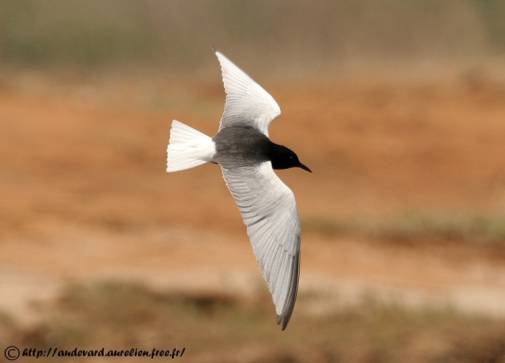
(A.Audevard)
Pigeon bisque Columba livia (Rock Dove)
To note a seemingly wild on the 22nd in Douara (GO), also in other sites around Palmyra, especially in Wadi el Abiad.
Woodpigeon Columba palumbus (Wood Pigeon)
One in Palmyra on 21st (GF, PY), 2nd on 25th at Ba’ath Lake.
It is palumbus as in Europe. Curious to find it in these places almost desert!
Turtle Dove Streptopelia turtur (Turtle Dove)
One on the 21st at Sed Wadi El Abiad (PY), one towards Arak on the 22nd, several groups of migrants towards the N (20 + 35 + 15) on the 24th between Sarat el Kasra and Halabbieh, 4 in migr. on the 25th at Lake Ba’ath (PJD), 4 in the north of Damascus on the 29th.
Turkish Turtledove Streptopelia decaocto (Collared Dove)
Noted from Palmyra to Aleppo. Seems to be lacking (or rare) in the north-west of the country.
Turtle Dove Streptopelia senegalensis (Laughing Dove)
Notable everywhere, including in the big cities (Damascus, Aleppo), sometimes very common (Deir Ez Zor, at Lake Ba’ath, etc …), except in the extreme north-west (not seen, Slenfeh, Kassab).
Cuckoo clock Cuculus canorus (Common Cuckoo)
One on the 24th at Deir Ez Zor (AA), the next day at Ba’ath Lake (PJD, PY), 2+ on the 28th at Kassab and one at Bloudan on the 30th.
Athena’s Owl Athene noctua (Little Owl)
One on the 21st at the dam of Palmyra, 3 in Talila the next day, 3 in the ruins of Palmyra on the 23rd (AA, GF), 2-3 on the 24th at the fortress of Halabbieh, quite a few days today in the Qaabi- As sector Sweideh, on the 25th at Ba’ath Lake.
Subspecies lilith (very pale). In fact, it is common throughout the desert region (east of Palmyra).
Barn Owl Tyto alba (Barn Owl)
One in flight at night at the Great Mosque of Aleppo (PJD).
Black Swift Apus apus (Common Swift)
2 on the 21st at Sed Wadi El Abiad, quite nb the 23rd at Palmyra, migr. noted on the 24th at Deir Ez Zor, passage also detected on the 25th at Lake Ba’ath and very nbx at Aleppo this day and the 26th, dozens at Lake Al Jabbul that day, dozens in migr. on the 27th at Al Ghab and Job Alghar (in the mountains), the same day at Slenfeh, that day at Kassab, then on the 29th, hundreds at the Krac of the Knights and hundreds in migr. in Lattakia and Damascus; hundreds in Damascus on the 30th.
Martinet pale Apus pallidus (Pallid Swift)
21, 7-8 at Sed Wadi El Abiad and 10-15 in the cliffs at Palmyre N (niche), one on 28 in Slenfeh (GF).
White-bellied Swift Apus melba (Alpine Swift)
4-5 at Sed Wadi El Abiad on the 21st, 20th the 25th at Maskanah (towards Aleppo).
House Swift Apus affinis (Little Swift)
2 on the 21st at Sed Wadi El Abiad (PJD et al.).
Breeder in the corner …
Alcyon magpie Ceryle rudis (Kingfisher foot)
Along the Euphrates, 2 at Deir Ez Zor on 23, 2 at Mheimideh and qqs in the Qaabi- As Sweideh area on the 24th, qqs at Ba’ath Lake and 2 at Maskanah on the 25th. Also 2+ on the 26th at the lake Al Jabbul.
Persian Bee-eater Merops persicus (Blue Cheecked Bee-eater)
20+ on the 24th in Mheimideh (niche here) and qqs in the Qaabi- As Sweideh area today.
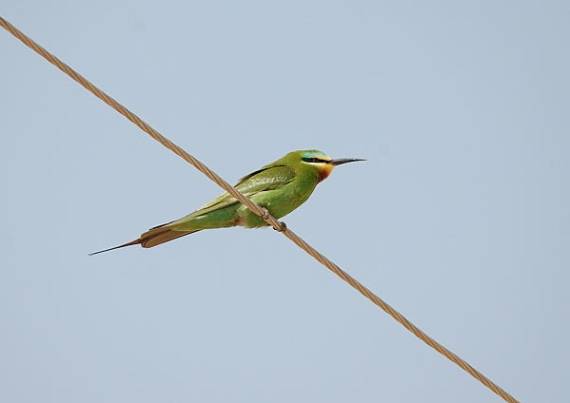
(G. Olioso)
Bee-eater Merops apiaster (European Bee-eater)
6-7 at Palmyra on the 21st, a small number on the 24th at Halabbieh, Mheimideh, and Qaabi- As Sweideh, on the 25th at Ba’ath Lake, on the 26th, at Lake Al Jabbul.
European Roller Coracias garrulus (European Roller)
One on the 22nd to Arak, on the 24th between Sarat el Kasra and the Qaabi- As Sweideh sector, on the 25th at Ba’ath Lake.
Hoopoe Upupa epops (Hoopoe)
5-6 + noted on the 21st between Damascus and Palmyra (desert), 3 at Talila and one at Arak on the 22nd, sometime here and there on the 24th between Mheimideh and the Qaabi- As Sweideh sector, one on the 25th at Ba’ath Lake, finally 2 in Slenfeh on the 28th.
Wryneck Jynx torquilla (Wryneck)
2 the 21st at Palmyra (AA, GF)
Woodpecker Dendrocopos medius (Middle Spotted Woodpecker)
The 28th, a well seen and another ent. above Slenfeh, to Job Alghar
The species was discovered in 2005 in the city of Slenfeh. She seems present elsewhere …
Syriac woodpecker Dendrocopos syriacus (Syrian Woodpecker)
2 females noted on 30 in Bludan in the city.
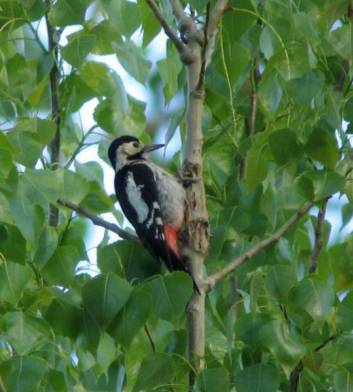
(G. Flohart)
Stylish Ammomaniac Ammomaniac Cincturus (Bar-tailed Desert Lark)
A male singer at Bir Haba on the 23rd.
In the song in flight, one hears in fact only the note huu, emitted a little in reverberato, and which reminds a little a note of the song of the sirli of the desert. The rest of the song (2-3 notes) are not audible.
Ammomane isabellin Ammomanes deserti (Desert Lark)
2 ind. N of Palmyra 21, 4-5 + 22 at Talila.
Sirli of the desert Alaemon alaudipes (Hoopoe Lark)
20+ ind. the 22 in Talila (common!), 2 choirs in Bir Haba on the 23rd
Lark larch Melanocorypha calandra (Calandra Lark)
At least 2 cheaters in the crops around Al Jabbul Lake on the 26th.
Horned Larks Melanocorypha bimaculata (Bimaculated Lark)
2 singers on the 30th above Abu Zad / Bloudan to the summit of Jbel Ain Ansou (?) At about 1800m.
This species will probably disappear from this locality with its habitat …
Calandrella brachydactyla calf lark (Short-toed Lark)
2 ind. to the summit Jbel Ain Ansou (?) on the 30th above Abu Zad / Bloudan.
Subspecies hermonensis.
Larkspine lark Calandrella rufescens (Lesser short-toed Lark)
A cp. In Bir Haba on 23 (AA, GO), a fisherman at Ba’ath Lake on 25th (PJD) and some birds (GO), singing in cultures on 26th at Al Jabbul Lake.
Great Crested Lark Galerida cristata (Crested Lark)
Common everywhere in the desert of Palmyra at Deir Ez Zor, as at Lake Al Jabbul on the 26th. In the west, the species is quite common to Sergilla and Slenfeh on the 27th, some ind. in Kassab on the 28th.
Two very different subspecies, by plumage AND singing:
- in the west of the country it is subspecies zion: brown birds, with a very simple singing like those of Western Europe
- in the desert, it is perhaps the subspecies brachyura: sand colored birds with a richer, more elaborate song, with “lark” type phrases. Difficult to think that it is the same species …
Lark lulu Lullula arborea (Woodlark)
One on the 27th at Job Alghar, 4-5 the next day above Slenfeh., Which singers on the 30th at Abu Zad / Bloudan.
Skylark Alauda arvensis (Sky Lark)
A singer, certainly of this kind, the 23, before Bir Haba …
A rather southern locality (for a very likely breeder), but the bird, tough in the desert, was singing in an (old?) Orchard with grass.
Eurasian Lark Eremophila bilopha (Temminck’s Horned Lark)
21, 4-5 + in the desert between Damascus and Palmyra and qqs around this city, quite nbx the next day at Talila, 4 in the ruins of Palmyra on the 23rd.
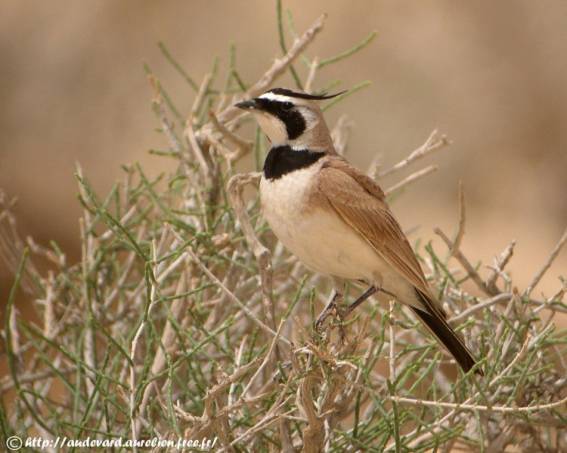
(A. Audevard)
Lark Eremophila alpestris (Horned Lark)
5+ on the 30th at Abu Zad, above Bloudan.
Subspecies bicornis , very pale (even more than penicillata of Turkey), like a Alouette bilophe in fact!
Bank Swallow Riparia riparia (Sand Martin)
3-4 21st at Sed Wadi El Abiad, 15+ at Deir Ez Zor on the 23rd, nbx ind. (nearby settlements) on the 24th on the Euphrates, several thousand on the 25th at Ba’ath Lake, in front of a thunderstorm, hundreds on the 26th at Lake Al Jabbul.
Swallow isabelline Ptyonoprogne fuligula (Rock Martin)
One on the 21st at Sed Wadi El Abiad.
Rock Swallow Ptyonoprogne rupestris (Crag Martin)
One on the 29th at Kassab …
Barn Swallow Hirundo rustica (Barn Swallow)
Qqs in migr. the 21st between Damascus and Palmyra and 30+ at Sed Wadi El Abiad that day, the 22nd at Talila, the 23rd at Deir Ez Zor, quite a bit of migration on the 24th along the Euphrates, as well as the 25th at Lake Ba’ath (with the Shores), Tens 26 on Lake Al Jabbul, noted in migration to Al Ghab and Sergilla on the 27th, dozens in migr. 28 to Homs and to Damascus, qqs in migr. on the 30th at Bloudan.
Subspecies rustica apparently.
Swallow Hirallo daurica (Red-rumped Swallow)
2 on the 21st at Sed Wadi El Abiad, 3 at Talila on the 22nd (2 at the entrance of the reserve), 10 on the 25th at Ba’ath Lake (migr.) And 2 at Maskanah, one at Aleppo on the 26th (PJD) , 4+ on the 27th at Slenfeh (niche), quite present on the 28th at Slenfeh and at Kassab (10+, niche), the same day the next day between this city and Ras al Basit.
Well present in the extreme north-west of the country.
Barn Swallow Delichon urbica (House Martin)
4-5 on the 21st at Sed Wadi El Abiad, 2 at Talila the next day, big colony (dozens of couples) at the Assad dam, 30th on the 28th at Kassab, one at Tartous on the 29th, colony in a building on the 30th above ‘Abu Zad to the summit (not far from the 2,000m alt.).
Rusty Pipit Anthus campestris (Tawny Pipit)
One on 21 at Sed Wadi El Abiad, 2 in all 22 at Talila, one at Mheimideh on 24 (PY), one on 26 at Al Jabbul Lake.
Pipit trees Anthus trivialis (Tree Pipit)
21, 3 in the desert towards Palmyra, one in the evening in this city and 5+ in Sed Wadi El Abiad, 5 on the 22nd in the evening in Arak.
Red-throated Pipit Anthus cervinus (Red-throated Pipit)
3+ on a small pond in the desert on the 21st to Palmyra, 3+ this day in Sed Wadi El Abiad, 2 in Bir Haba on the 23rd, an ent. in cultures in Zalabieh (PJD) on the 24th, an ent. on the 25th at Ba’ath Lake (PJD), 4-5 on the 26th at Al Jabbul Lake.
Water Pipit Anthus spinoletta (Water Pipit)
One on the 26th at Al Jabbul Lake.
Without doubt the subspecies coutelli .
Yellow Wagtail Motacilla flava (Yellow Wagtail)
4-5 at the edge of the pond in the desert on the 21st towards Palmyra (subspecies ??, apparently a flava type at least), 20 fly in flight on the 22nd in Douara, 10 in flight in Palmyra (AA) and a male flava at Bir Haba on the 23rd, 15+ feldegg males stationed on the 24th in Mheimideh and 50 in migration this day at the same place (more than here and there along the Euphrates), which are feldegg cantoned on the 26th at Al Jabbul lake and 10 at flava (migr.) call today at the same place.
It’s feldegg nesting here. We are obviously at the end of the passage …
Citrine Wagtail Motacilla citreola (Citrine Wagtail)
Only 2 males noted on the 21st at Sed Wadi El Abiad and 2 males on the 26th at Al Jabbul Lake (GF, GO) …
Wagtail Rocks Motacilla cinerea (Gray Wagtail)
A male at the edge of a stream, in the forest on the 28th towards Kassab
Nicheuse probable, discovered very recently in Syria.
Yellow Wagtail Motacilla alba (White Wagtail)
One on 21 at Sed Wadi El Abiad, 5 on 23 at Bir Haba, 5 on 24 at Mheimideh (JYF), 2 on 25 at Ba’ath Lake, 5 on 26 at Al Jabbul Lake.
Although it is alba here (actually ” dukhunensis “), but the birds often show a black bib more extended down and a little more white on the face …
Arabian Bulbul Pycnonotus xanthopygos (Yellow-vented Bulbul)
One to Salma and 2+ to Kassab on the 28th, 1-2 the next day at the same place.
Himalayan Bulbul Pycnonotus leucogenys (White-cheeked Bulbul)
5 in total (2 seen personal) on the 24th at Deir Ez Zor (gardens in town).
Seems very localized in this part of Syria.
Cute Cave Troglodyte Troglodyte (Wren)
2 singers on the 27th at Job Alghar, quite nxbx in Kassab on the 28th.
Subspecies Cypriots .
Red Agrobar Cercothrichas galactotes (Rufous-tailed Scrub-Robin)
22, one at Talila and another at Arak, 2 noted by others on 25 at Ba’ath Lake, one on 26 at Al Jabbul Lake (PJD, ER).
Nightingale with the name Luscinia megarhynchos (Rufous Nightingale)
One at Halabbieh on the 24th, 2 at Ba’ath Lake on the 25th (JYF, GO), nbx singers (including the night) on 27-28 in Slenfeh.
Rossignol prognosis Luscinia luscinia (Thrush Nightingale)
A likely on the 21st at Sed Wadi El Abiad, a 22 at Arak, the evening, 3 (a personal sight) on 25 at Ba’ath Lake, 2 on 26 at Al Jabbul Lake, and 28, a in Slenfeh (GO ) and one in Kassab (PJD, JYF).
Passage not finished …
White-throated Iriana Irania gutturalis (White-throated Robin)
3 ind. including 2 males on the 27th at Job Alghar, then the next day 4 cheurs and 2 fem. in all above Slenfeh (including in the previous site).
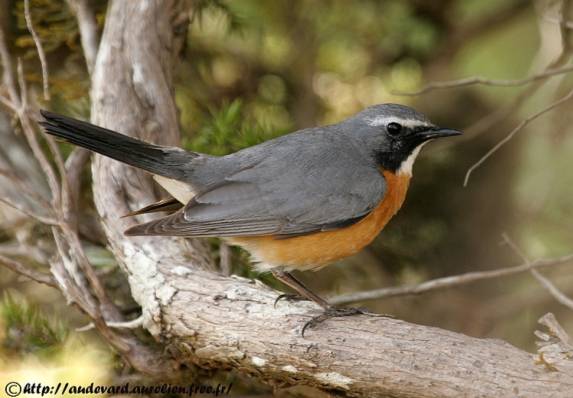
(A.Audevard)
Black Redstart Phoenicurus ochruros (Black Redstart)
A male semirufus to Palmyra on the 21st, a fem. on the 24th at Halabbieh (GO), quite nbx breeders (semirufus) above Abu Zad / Bloudan, up to 2000m.
The birds – wintering (migratory) as nesting – are semirufus : very black upperparts , like the breast, the rest being red.
Redstart Phoenicurus phoenicurus (Common Redstart)
8+ on the 22nd at Talila including a samamisicus (JYF) and 2 at Arak that day, 10 at Deir Ez Zor and 4 at Halabbieh on the 24th, sometime on the 25th at Lake Ba’ath, a fem. 26 at Al Jabbul Lake (PY) and another on 30 at Bloudan (PJD).
Apart from one ind., All birds are of the type subspecies.
Saxon meadow Saxicola rubetra (Whinchat)
21, one in Sed Wadi El Abiad and one in Palmyra, one in the ruins of this city on 23 (AA), 2+ 24 in Zalabieh, one on 26 at Al Jabbul Lake (AA).
Oenanthe Isabellina (Isabelline Wheatear) isabelle wheatear
Qqs in the desert to Palmyra on the 21st (breeders), 3 in Talila on the 22nd and a singer on the 30th in Bloudan (PJD).
Northern Wheatear Oenanthe oenanthe (Common Wheatear)
1 fem. and a male (PY) on the 22nd at Talila, a male on the 27th at Sergilla, and quite common as a breeder at Bloudan and near.
Subspecies libanotica (rather pale).
Wheatear Oenanthe pleschanka (Foot Wheatear)
2 on the 28th in Slenfeh (PY).
Eared Wheatear Oenanthe hispanica (Black-eared Wheatear)
One male on the 21st at Sed Wadi El Abiad (GO et al.), A male at Mheimideh (AA), then on the 27th, 2 males and one fem. Sergilla (breeders), a cp. in Al Bara, a male at Job Alghar (JYF) and 2 males 2cy (AA, PJD), 5-6 in Slenfeh the next day (niche on the heights) and some also, especially around the orchards on 30 in Bloudan (niche) .
A female widely photographed on the 24th in Halabbieh!
Probably a late migrant. Note the demarcation is clear between the orange-brown chest and the white belly (more “fuzzy” in the ear).
Desert Wheatear Oenanthe desert Desert Wheatear
A male to Palmyra, in the desert (JYF), 20 in all the 22 to Talila, a fem. in the ruins of Palmyra on 23 (AA).
Mening Wheatear Oenanthe lugens (Mourning Wheatear)
2 males on the 21st at Palmyra, one at Douara the following day.
Monticola rock Monticola saxatilis (Rock Thrush)
A fem. 28 at Slenfeh (PY) and a cp (breeder). to the summit above Abu Zad / Bloudan on the 30th.
Blue Monticola Monticola solitarius (Blue Rock Thrush)
2+ 28 over Slenfeh and a noted male over Abu Zad on 30 (GF).
Subspecies longirostris barely paler than solitarius .
Blackbird Turdus merula (Blackbird)
Quite common on the 21st at dawn (singers) in the suburbs of Damascus, some 27-28 in Slenfeh and surroundings, some in Bloudan and around 30.
Cetti’s Warbler Cettia cetti (Cetti’s Warbler)
At Deir Ez Zor, 3+ on the 23rd and on the 24th, 2+ on the 25th at Ba’ath Lake.
Prinia gracile Prinia gracilis (Graceful Warbler)
It is common to Sed Wadi El Abiad, then all along the Euphrates Valley, as far as Ba’ath Lake, as are some Ind. on the 26th at Al Jabbul Lake. Further west, it is found in the mountains at Slenfeh (a hunter on the 27th), and 3 in Kassab on the 28th. Quite common in plain towards Lattakiale 29.
Is the species known from Slenfeh?
Locustella luscinioid Locustella luscinioides (Savi’s Warbler)
A coach on the 24th in Mheimideh (PJD, GF, GO).
This species possibly breeds there.
Lusciniole with mustaches Acrocephalus melanopogon (Mustached Warbler)
An ind. observed on 26th at Al Jabbul Lake (GF).
Migrator?
Phragmites of the rushes Acrocephalus schoenobaenus (Sedge Warbler)
A migrant on 21st at Sed Wadi El Abiad, but 2 singers stationed on 26th at Al Jabbul Lake (PJD)
This species could breed there.
Eurasian Reed Warbler Acrocephalus scirpaceus (Reed Warbler)
Singers on the 21st at Sed Wadi El Abiad, one at Deir Ez Zor on the 23rd (JYF), 2-3 the next day in this city (Euphrates), 2-3 on the 25th at Ba’ath Lake (PJD et al.) on 26th at Al Jabbul Lake, one at Kassab (!) on the 28th (PJD).
Subspecies fuscus .
The song of this form seems to be a bit different from scirpaceus. More “fluty” and more musical.
Clamorous reed warbler Acrocephalus stentoreus (Clamourous Reed Warbler)
A noted at Deir Ez Zor on the 24th (PJD, JYF et al.).
Migrating gold breeder?
Iraq’s Warbler Acrocephalus griseldis (Basra Reed Warbler)
One on 24 in Halabbieh view and phot. by GF and PY.
Notes from PY and GF:
Bird discovered by P. Yésou in a reedbed bordering the dam lake. Observed for a minute, digiscoped and not found.
Size: from the outset perceived as close to the turdoid (to the naked eye I think I have to deal with this species), large size confirmed by comparison with nightingale hunting in the same corner; size similar to turdoid also noted by Guy Flohart (recalls a small Acrocephalus in structure). But in the telescope the silhouette much finer than turdoid calls much more the comparison with a “small” rousserolle -> the “contradiction” of the impressions of size and silhouette is the first highlight of the bird.
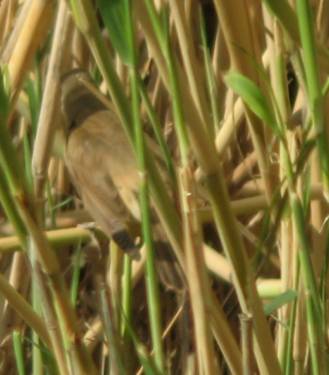
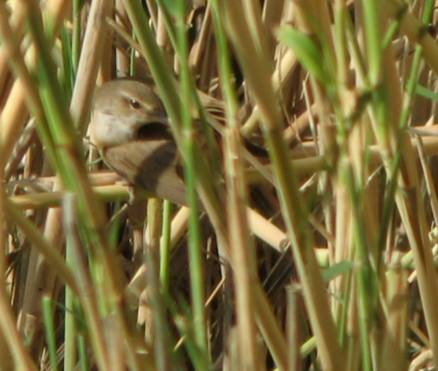
(Guy Flohart)
Sihouette: quite thin, or at least elongated. The impression of finesse comes less from the body (proportionately more corpulent than the small rousserolles) that the thin head (head shape reminiscent of small rousserolles, very different from turdo) and the length of the wings and tail; R1 long projection, recalling turdo (GF speaks of “at least 8 visible R1” but I can not be so precise).
Color: contrasted between brown upperparts and clear underparts, off-white only faded brownish on flanks (= lighter than turdo below). The top is very different from turdo: cold brown, earthy, with gray shade; the head sometimes looks gray at a certain angle / light!
Characteristics: pale eyebrow (off-white / beige), very long (as long or more than isabelle rousserolle) and fine; never seen a rousserolle with such an eyebrow. Beak long and thin, much thinner than turdo, seeming proportionally longer.
Legs: grayish.
After the fact: in the field I had not paid attention to the color of the tail, but in the photo of Guy we see that it is darker than the back, this is given as a criterion in the literature. These photos also confirm the gray shade of the plumage, the projection R1, the eyebrow, and the shape of the head … but it misses the beak!
Turdoid Rousserolle Acrocephalus arundinaceus (Great Reed Warbler)
3 on the 24th at Deir Ez Zor (GF, GO), a chef at Ba’ath Lake on the 25th, dozens of singers on the 26th at Al Jabbul Lake.
Pale Hippolais pallida (Eastern Olivaceous Warbler)
1-2 cheaters on the 21st at Sed Wadi El Abiad, another on the 24th at Deir Ez Zor
The song is of type “Rousserolle effarvatte” in more precipitate.
Upcher Hippolais languida Hypolaïs (Upcher’s Warbler)
A doctor on the 27th in Sergilla (photo).
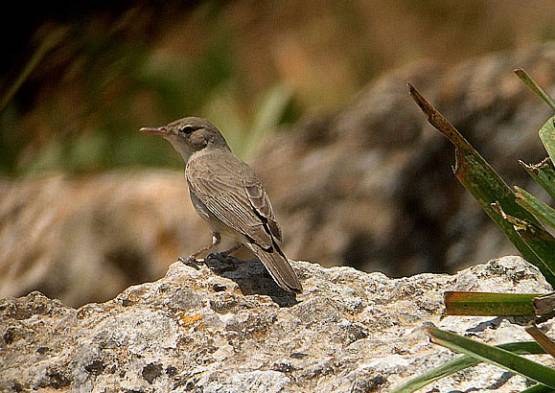
(Ph.J. Dubois)
Icterine Warbler Hippolais icterina (Icterine Warbler)
One at the edge of a pond in the desert, 21 to Palmyra.
Menetries Warbler Sylvia mystacea (Menetries’s Warbler)
5 in all bordering Euphrates on the 24th at Deir Ez Zor (GF et al.), 2 males and one fem. on the 25th at Ba’ath Lake.
Sylvan melanocephala (Sardinian Warbler)
2-3 at Palmyra on the 21st, 2 at Arak on the 22nd, and then on the 27th at Slenfeh, 1-2 at Kassab on the 28th, some of whom were here the next day, 2 noted in town on the 30th at Bloudan.
Ruppell’s Warbler Sylvia rueppelli (Ruppell’s Warbler)
A male dog atop a “green” oak tree on the 27th near Kassab (AA, PJD, JYF).
Beautiful species that resembles the F. melanocéphale (except the black plastron). Song particularly rapei, more “precipitated” than this one. Frequent a medium to oaks (green?) Shrubs.
Orphean Warbler Sylvia crassirostris (Eastern Orphean Warbler)
The 27, 2+ cp. to Sergilla and some healers ent. to Job Alghar, a manager over Slenfeh on the 28th, 2 noted on the 30th at Bloudan.
A Sergilla, female seen on her nest, brood (photo)! The song is more melodious, richer than that of hortensis.
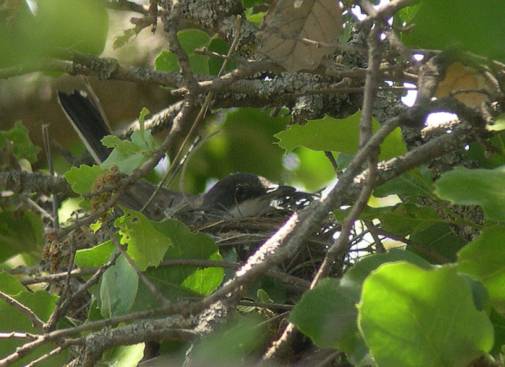
Woodland Warbler Sylvia curruca (Lesser Whitethroat)
One in Palmyra on the 21st (PY), 10 ind. the 22 of which one ind. of the halimodendri type, one at Deir Ez Zor on the 24th (AA), one at the Ba’ath Lake on the 25th. In the west of the country, it commonly nests: qqs in Sergilla, and common in the bush towards Job Alghar on the 27th, likewise the next day to Slenfeh and Kassab; it is also very common in the latter locality (Sylvia most common), finally qqs the 30 in Abu Zad / Bloudan, including a (migrant?) Nearly 2000m in the low vegetation …
Some migrants still, but mostly nesting birds in the West. Note that Talila, very pale birds on the head, have a rolled alarm type “halimodendri” in addition to the typical curruca tèk. So what subspecies ??
In the North-West, the song of birds is strong babble (not muted) that ends with the final classic rutututu (but less marked, probably because of the previous full song), which gives a song enough “warbler Mediterranean “, much more melodious than that of the birds of Western Europe. The parotics are only slightly darker than the gray cap, no orbital circle. Note that some birds in this region also have a rolled alarm!
Whitethroat Sylvia communis (Common Whitethroat)
21, one in Palmyra, one in Sed Wadi El Abiad (PJD), 5+ (migr.) On the 22nd in Talila, one in the center of Aleppo on the 27th (AA, JYF) and one in Sergilla (PY) on 27, 2 at Kassab on the 28th (GO), one on the 29th at Kassab (GO) and another near Lattakia that day.
This species possibly breeds in the Aqra mountains …
Hawksnake Sylvia nisoria (Barred Warbler)
One on the 28th at Kassab, probably on the 30th at Abu Zad (GO).
Blackcap Sylvia atricapilla (Blackcap)
A male in Palmyra (AA) on the 21st, 6-7 at Talila on the 22nd, 3+ at the Ba’ath lake on the 25th, the 26th at the Al Jabbul lake, the 28th at Slenfeh and 1-2th this day at Kassab, a female on the 29th at Kassab and a male at Abu Zad on the 30th (GO).
Piping Whistler Phylloscopus sibilatrix (Wood Warbler)
One on the 21st at Sed Wadi El Abiad (PY).
Poutine fitis Phylloscopus trochilus (Willow Warbler)
On the 21st, one at Sed Wadi El Abiad and one at Palmyra, 10+ on the 22nd at Talila, one in the ruins of Palmyra on the 23rd (PY), 3-4 at Deir Ez Zor on the 24th of May, 5+ in Zalabieh today, 10+ on 25 at Ba’ath Lake, 26 on Al Jabbul Lake, 1-2 on 27 in Sergilla, one in Kassab on the 28th, and one today in Slenfeh (AA).
At Talila at least, birds, with a rather gray color, clearly show greyish, dark legs, and a “look” of P. véloce. It must be probably oriental acredula, close to yakutensis, which has dark gray legs.
Swift Screamer Phylloscopus collybita (Common Chiffchaff)
One in Palmyra on 21 (AA, GF), 2 in Talila and 2 in Arak on 22, 4+ in Deir Ez Zor, of which one is on 24. In the north-west of the country, where the species breeds, singers on 28 in Slenfeh. A gray bird of the “tristis” type on the 29th at Kassab (GF, JYF).
The birds seen in migration are of the abietinus type quite typical. On the other hand, the breeding birds of the north-west are a little confusing: the plumage is rather brown-greenish-gray, more than in abietinus / collybita (eyebrow rather marked, no visible yellow). But birds are more abietinus than sad. The song is that of these taxa. On the other hand, the cry – regularly heard – is very close, if not identical to that of tristis: fu … fled … What real taxon ??
What is the real taxon of breeding birds in North-West Syria? See above.
Gray Flycatcher Muscicapa striata (Spotted Flycatcher)
One on the 24th at Deir Ez Zor (AA, JYF), and the 4th at Slenfeh, and some in the forest towards Kassab are quartering breeders.
Half-Collared Flycatcher Ficedula semitorquata (Semi-collared Flycatcher)
A male is admired and photographed at the entrance to the Talila Reserve on 22 …
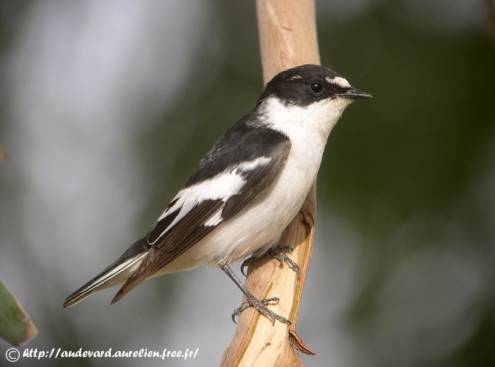
(A.Audevard)
Bearded Tit Panurus biarmicus (Bearded Tit)
Qqs ind. here and there noted on the 26th at Lake Al Jabbul.
This species probably breeds in the reeds of Lake Al Jabbul …
Iraq’s Turdoides altirostris (Iraq Babbler)
One of the (new) Syrian specialties: at Deir Ez Zor, 3 on the 23rd and 8th the next day (on the other bank), 5+ on the 25th at Ba’ath Lake.
Present throughout the Euphrates. Behavior typically “babbler”: often in the vegetation, but not particularly fierce. General color buff tawny, without particular mark. Long tail, short wings. White throat.
The most classic / characteristic cry is a trill reminiscent of Gr. Castagneux. Also acute pipipipi when the birds are excited.
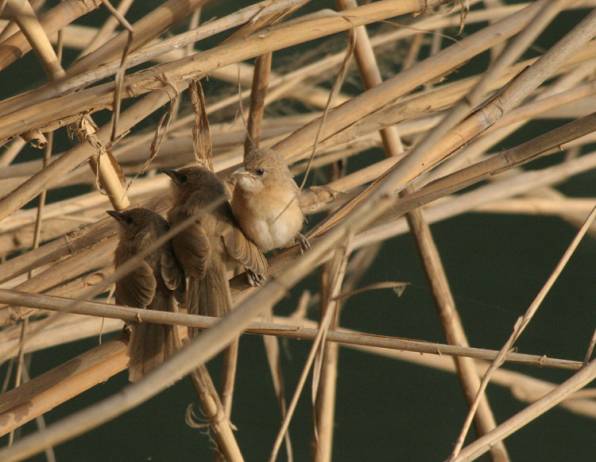
(E. Rousseau)
Long-tailed Tit Aegithalos caudatus (Long-tailed Tit)
3 on the 28th in Slenfeh.
Subspecies tephronotus with streaked blackish cheek.
This species was first found in Syria in 2003 … New locality there?
Black tit Parus ater (Coal Tit)
Several singers on the 28th above Slenfeh.
Apparently the second Syrian record during the breeding season .
Blue Tit Parus caeruleus (Blue Tit)
At Slenfeh, ent. 27 and 2-3 on the 28th.
Probably subspecies satunini (little marked).
Tit Parus major (Great Tit)
Juv. noted the 27th to Sergilla, quite common to Slenfeh the 27-28, noted also the 28th in Kassab, the 29th in the KC, the same thing the next day in Bloudan.
Subspecies terraesanctae, a little duller than major.
Neumayer nuthatch Sitta neumayer (Western Rock Nuthatch)
2 ind. noted in a cliff on the 28th above Slenfeh towards Job Alghar (JYF, PJD, GO, ER).
Rather discreet!
Oriole Oriolus oriolus (Golden Oriole)
Passage: the 21st, one in Palmyra and one in Sed Wadi El Abiad, 8 ind together take off trees at the entrance to Talila reserve on the 22nd, a male on the 25th at Ar Raqqa (GO), finally 3 in Slenfeh on 28 (YT).
Shrike Lanius collurio (Red-backed Shrike)
In full passage, especially males: 21, a male to Palmyra (desert) and one to Sed Wadi El Abiad, 2 males to Talila 22, one near Palmyra 23 (PJD), along the Euphrates and at Mheimideh on the 24th, on the 25th at Lake Ba’ath, some tens in all at Lake Al Jabbul on the 26th, 2 males at Sergilla and another at Al Bara on the 27th, some at Slenfeh and 2+ at Kassab on the 28th. , 3 males in this locality on the 29th, quite common on the 30th in Bloudan and Abu Zad.
Pink-breasted Shrike Lanius minor (Lesser Gray Shrike)
21, one in the desert in Palmyra and another in this city, one in Qaabi- As Sweideh area on 24 (GF), one on 26 at Al Jabbul Lake (AA, PJD).
Southern Loggerhead Lanius meridionalis (Southern Gray Shrike)
One on the 30th at Abu Zad (PY).
Northern Shrike Lanius nubicus (Masked Shrike)
A cp. quartered on the 28th at Kassab (niche here).
Red-headed Shrike Lanius senator (Woodchat Shrike)
One on the 21st in the desert towards Palmyra and one in Sed Wadi El Abiad that day, a male on the 24th in Halabbieh, a cp. the 27th at Sergilla and 2 at Al Bara on the 27th, 3 males together, very demonstrative at Abu Zad on the 30th.
Note that the male Halabbieh has salmon red flanks very marked … Theoretically the subspecies niloticus does not have any.
Eurasian Jay Garrulus glandarius (Eurasian Jay)
Ent. The 27th at Slenfeh (PJD), 2 here the next day and 2+ in the forest towards Kassab on the 28th, qqs at Kassab on the 29th.
Subspecies of the group atricapillus .
Magpie Pica Pica (magpie)
Qqs at Deir Ez Zor on the 23rd, commune along the Euphrates on the 24th, as at Ba’ath Lake on the 25th.
Chough Pyrrhocorax pyrrhocorax (Red-billed Chough)
8 not far from Sed Wadi El Abiad on the 21st, in a high cliff.
Subspecies docilis ? Breeder here, known.
Jackdaw of the towers Corvus monedula (Eurasian Jackdaw)
4+ in a colony of F. crécerellettes on the 24th in the Qaabi- As Sweideh area, 15+ also in the cliffs where the Kestrel nestles on the 25th at the edge of the Lattakia.
Subspecies soemmerringgii . At this time the white mark at the base of the neck is either not visible or visible very closely.
Rook Crow Corvus frugilegus (Rook)
A perched wire on the 24th in Halabbieh. Late wintering …
Hooded Crow Corvus corone cornix (Hooded Crow)
7 on the 23rd at Deir Ez Zor, quite common along the Euphrates on the 24th, the same on the 26th at Lake Al Jabbul. In the west the species is noted everywhere (Slenfeh, Kassab, Homs region, Bloudan) but in rather modest numbers.
Sharpii subspecies .
Raven Corvus corax (Common Raven)
One in the desert towards Palmyra on 21, 2 to the summit above Abu Zad on the 30th.
Common Starling Sturnus vulgaris (Common Starling)
4 ind. (late wintering) on the 26th at Al Jabbul Lake.
House Sparrow Passer domesticus (House Sparrow)
Met everywhere, until about 2000m above Abu Zad the 30. Also present in the desert (Talila) where it is common.
Many birds are of the biblicus type (close to domesticus – greyish cheek), but birds have very white cheeks (desert, Euphrates) and then clearly resemble eastern indicus birds .
Spanish sparrow Passer hispaniolensis (Spanish Sparrow)
A troop on the 21st in the ruins of Palmyra (PY), 4 in Talila on the 22nd, at Ba’ath Lake on the 25th, on the 26th at the Al Jabbul lake, and in Al Ghab on the 27th (PY).
Sparrow Dead Sea Skip moabiticus (Dead Sea Sparrow)
5-6 singing males on the 21st at Sed Wadi El Abiad, then 15th on the 25th at Ba’ath Lake, and common around Al Jabbul Lake (niche in these two sites).
Males are very active in breeding (nest building). Sometimes, as in Sed Wadi El Abiad, they sing in the heart of tamarisks and do not show themselves.
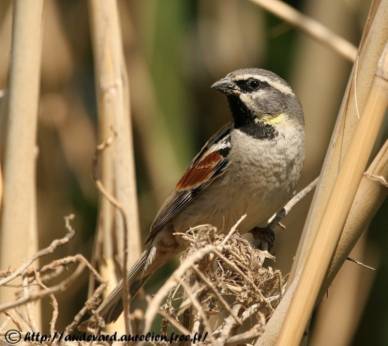
(A.Audevard)
Yellow-throated Sparrow Petronia xanthocollis (Yellow-throated Sparrow)
3 female notes on the 21st at Sed Wadi El Abiad.
Viewed from far enough; note the wing bars sharp, the beak strong.
Light Sparrow Carpospiza brachydactyla (Pale Rock Sparrow)
70-80 ind. in all above Bludan in Abu Zad, in areas with scant vegetation.
Especially seen in flight; the birds are fierce, do not hold in place and do not let themselves be put down. Overall, they are very similar to M. soulcie. Underneath white cream, not striated, the white tail is visible (+ only at Soulcie). In flight, short tail and wings appearing translucent. The cry is sharp, a little buzzing and reminds a little the domestic Mr..
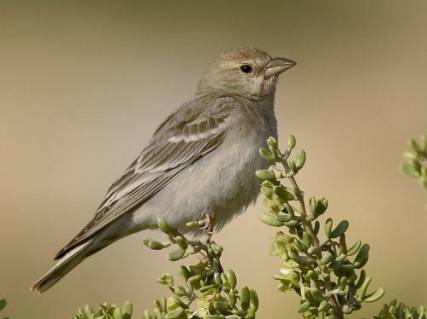
Sparrow Sparrow Petronia petronia (Rock Sparrow)
Quite nbx the 27th to Sergilla, quite common to Abu Zad the 30th.
Chaffinch Fringilla coelebs (Common Chaffinch)
3 including one on 26th at Al Jabbul Lake (PJD), quite nbx on the 28th in Slenfeh as well as in the forest towards Kassab, the same on the 29th towards Ras al Basit.
Breeder in the west.
European Serin Serinus Serinus (European Serin)
One to Job Alghar on the 27th (GO); 2 choirs in Slenfeh and a forest towards Kassab on the 28th.
Syrian Serin Serinus syriacus (Syrian Serin)
15 in all 30, especially in orchards in Abu Zad.
Breeder in the west.
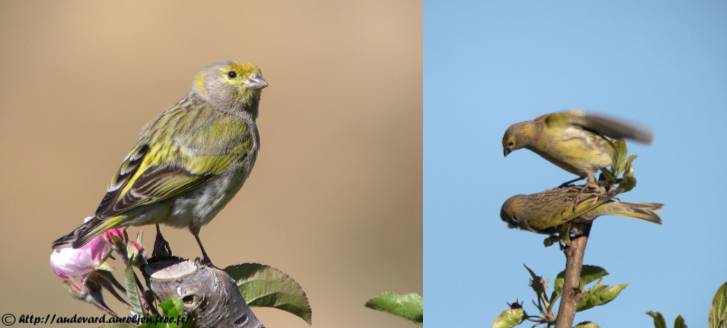
(A.Audevard) (Ph.D. Dubois)
Greenfinch Passer domesticus (Greenfinch)
A gunman saw on the 25th at Ar Raqqa (AA, PJD), then quite common on the 27th to Sergilla and Job Alghar, the same day the next day in Kassab and Slenfeh, some on the 30th at Abu Zad.
This species seems to breed at Ar Raqqa which is rather far east of the known breeding range in Syria.
Goldfinch Carduelis carduelis (Goldfinch)
2 on the 28th at Kassab …
Linous Linnet Carduelis cannabina (Linnet)
27th, 2th at Sergilla, 3 at Job Alghar, and one at Slenfeh, quite a bit in this last locality on the 28th, as well as at Abu Zad on the 30th.
Subspecies bella .
Lichtenstein’s Finch Rhodopechys obsoleta (Desert Finch)
Noted in Palmyra with 7-8 on the 21st and in Talila with 3-4 on the 22nd.
Crazy Bunting Emberiza cia (Rock Bunting)
In the mountains, in the West: 2-3 on the 27th in Slenfeh, the same thing the next day, 1-2 on the 29th in Kassab, 2 in Abu Zad on the 30th.
Ortolan sparrow Emberiza hortulana (Ortolan Bunting)
8+ at the edge of a pond in the desert 21 to Palmyra, 1 fem. on the 22nd at Talila. Then 20-25 ind. the 27th to Sergilla including 2 male cheaters.
Males singing at Sergilla, possibly breeders there (perfect habitat for the species).
Cinderella Sparrow Emberiza caesia (Cretzschmar’s Bunting)
3 cheaters on the 27th in Slenfeh, 2-3 the next day at the same place and 2+ this day in Kassab.
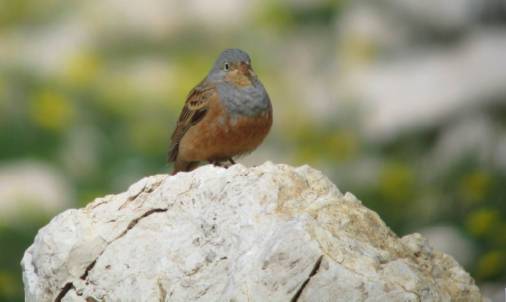
(G. Flohart)
Melanocéphale Bunting Emberiza melanocephala (Black-headed Bunting)
2 males in staging area on the 22nd in Talila, a male on the 24th 2km before Alkibar (PJD, JYF), a hunter on the 25th towards Aleppo (AA, GO), 15 in all on the 26th at Al Jabbul lake (some cheaters and 3 migrators ). To the west, there are many chieftains between Sergilla and Slenfeh (except in Al Ghab and Job Alghar, in the mountains), on the 28th at Kassab, some to Ras al Basit on the 29th.
Variable cries (but no doubt related to the alarm): you or could it or pi-heu sparrow.
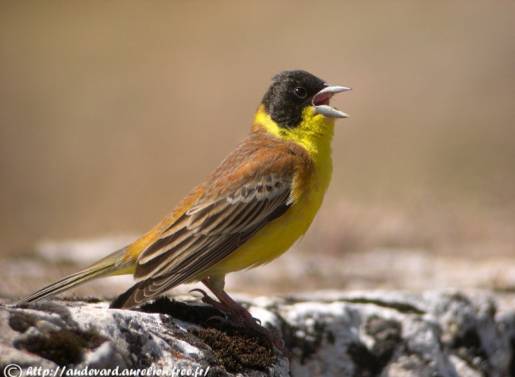
(A.Audevard)
Reed Bunting Emberiza schoeniclus (Reed Bunting)
2 rated at Deir Ez Zor (PY).
Bunting meadow Miliaria calandra (Corn Bunting)
Qqs noted towards Palmyra (desert area) and Palmyra, as well as a chieftain at Sed Wadi El Abiad on the 21st, 2-3 roadside to Aleppo on the 25th, quite common on the 26th around Lake Al Jabbul, nbx in Al Ghab and the surrounding hills on the 27th, qqs at Kassab on the 28th and towards Ras al Basit on the 29th.
MAMMALS
Hedgehog concoloured Erinaceus conccolor (Eastern European Hedgehog)
One found dead on the roadside on the 27th in Al Ghab.
Rüppel’s fox Vulpes rueppelli (Rüppell’s Fox)
A view at the entrance to the Talila Reserve on the 22nd
Hermine Mustela erminea (Ermine)
One on 28 in Slenfeh (GF).
Caucasian Squirrel Sciurus anomalus (Caucasian Squirrel)
Quite nbx on the 28th in Slenfeh, in the pines, in the city.
No brushes in ears, back slightly gray. Also note the diversity of cries (close to those of woodpeckers and nuthatches!).
Syrian Hare Lepus europaeus / capensis syriacus (Syrian Hare)
A note at the dam of Palmyra 21 (YT).
Divergent information concerning the species to which this form should be attached …
Gazelle des Sables d’Arabie Gazella subgutturosa marica (Sand Gazelle)
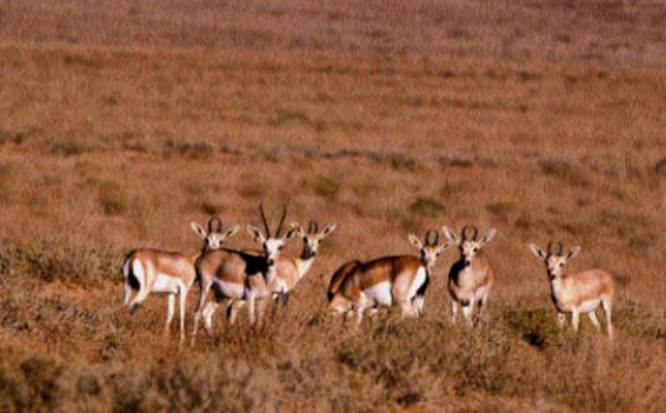
Some were noted on the 22nd in Talila, in a large reintroduction pen.
Arabian Oryx Oryx leucoryx (Arabian Oryx)
Dozens on the 22nd in Talila, in their large reintroduction pen.
REPTILES & AMPHIBIANS
Green toad Bufo viridis
One on 21.04 at Sed Wadi el Abiad.
Bedriaga frog Rana bedriagae
Several observations in the mountains of the west of the country, including Kassab.
Savignyi tree frog Hyla savignyi
At least 28.04 in Slenfeh, some at Kassab.
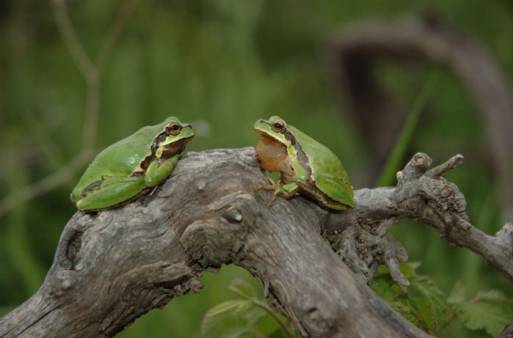
(G. Olioso)
Acanthodactylus boskianus
Desert species. At least 22.04 in the vicinity of Palmyra.
Acanthodactyl Acanthodactylus pardalis
Looks much like the previous one. Spread and common in desert areas.
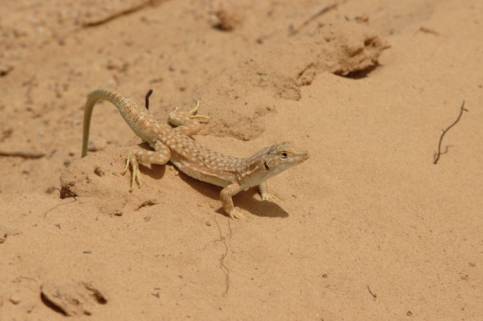
(G. Olioso)
Acanthodactyl Acanthodactylus orientalis
A 24.04 on the road to Mheimideh.
Lizard of Cappadocia Apathya cappadocica wolteri
Some 27.04 in the ruins Sergilla.
Lacerta uncertaina sedis laevis
Two or three on the 28.04 during the picnic stop down Kassab.
Snake eye lizard Ophisops elegans ehrenbergii
Abundant 28.04 above Slenfeh.
Ptyodactylus puiseuxi
This is the local taranto, seen on 24.04 on the walls of the Halabbieh citadel.
Trapellus lessonae
Some 27.04 in the ruins of Sergilla.
Trapellus pallidus agnatae
At least one at the edge of the palm grove of Palmyra and in the desert at Talila.
Agama of Europe Lodakia stellio
Some 27.04 in the ruins of Sergilla. Also seen at Krac des Chevaliers on 29.04.
ANNEX
Correspondence with L. Svensson on the Swift and Swift Warblings
Dear Philippe,
Back from the short trip to Switzerland and France. Saw a Short-toed Eagle in the Luberon Valley, but else not much. Well, the reason was to wait for the wedding of a friend outside Lausanne, so it was not a birding trip.
I was surprised to learn that the Chiffchaff breeds in NW Syria. I assume that Dave Murdoch has found nests, or other solid proofs of breeding, so that we can accept the claim that they are really breeding and not just singing on migration (see Blyth’s Reed Warbler for instance).
If he has, it is an interesting addition to the range of the species. The most natural would be so-called ‘ brevirostris ‘ that breeds also in Syria. But there is a surprising gap in the range, because to my knowledge, ‘brevirostris ‘ breeds mainly in N Turkey. I have never heard of any breeding records in Turkey, but it can be overlooked. Gold the species has made a recent range expansion.
The song you describe it does not alter my impression that it is ‘ brevirostris ‘. The fine series of ‘titititit’ inserted in the song occur in collybita and abietinus, and are actually just an evidence of breeding in Syria, they are believed to be used in the song of newly arrived.
Ssp. ‘ brevirostris ‘, here is a subtle and questionable variation of abietinus. I think more research is required before one can accept it as a separate and valid race. It is supposed to be slightly smaller and more brown-gray than proper abietinus , but there appears to be overlap and variation in these respects, and there are few specimens in collections to study.
Your rating que le call Was similar to tristis ( ‘fiu’) is very interesting, and I think is good for ‘ brevirostris ‘, since, if I remember Correctly, this is the only thing qui differs from classic abietinus (qui of goes racing ‘hoeet’).
— Your observations regarding Lesser Whitethroats are very interesting to me! First, I did not know that they were breeding in the area at all. I can not remember when we visited the Iskunderun of Turkey the other year. Are you absolutely sure that they are breeding?
Birds in E Turkey are considered to be curruca or ‘ caucasica ‘, a subtly more gray-backed population of Caucasus slopes. Both sing very similar to curruca in Europe.
However, I am aware of claims that I do not know what you think of it, but I do not know which way you like the Syrian birds. What are these birds, then? Well, it is not known yet. They are just a song variation ofcurruca , in the easternmost range of curruca , or the link between curruca and althaea (which would make it less tempting to split curruca and althaea ). I think more systematic observations are needed before we can say. To date I am not prepared to label any Turkish birds as althaea. No specimens collected in Turkey althaea fits. They all look much more like curruca . About the Syrian Birds I can only guess and speculate. I know no more than you!
If you get more information about these two occurrences please let me know. The subject is highly interesting to me.
All the best for now,
Lars
My answer :
Dear Lars,
Thank you very much for your reply. I just found it after a short break in Auvergne. Regarding your questions:
1 / Chiffchaff: some of the birds we saw were definitely in breeding period. In NW Syria, one of us saw a bird (assuming a female) building a nest with dry herbs. What is it that is really interesting in the forest / bushy mountains we visited along the border with Turkey, around Kassab at least.
Ssp. ‘ brevirostris ‘ is a subtle and questionable variation of abietinus. I think more research is required before one can accept it as a separate and valid race. It is supposed to be slightly smaller and more brown-gray than proper abietinus , but there appears to be overlap and variation in these respects, and there are few specimens in collections to study.
Your note that the call was similar totristis (‘fiu’) is very interesting, and I think is good for ‘brevirostris’, since, if I remember correctly, this is the only thing which differs from the classic abietinus (which of course goes ‘hoeet’).
Yes it is amazing. I do not know that ‘ brevirostris ‘ is not recognised as a valid taxon, but it is strange that, although very close to abietinus , the call is quite tristis-like. One more evidence of the clinal variation of Chiffchaff?
2 / Lesser Whitethroat
Your observations regarding Lesser Whitethroats are very interesting to me! First, I did not know that they were breeding in the area at all. I can not remember when we visited the Iskunderun of Turkey the other year. Are you absolutely sure that they are breeding?
One more time we saw many birds building All the males were in full song. It was probably the most common sylvid species in NW Syria (mountains).
However, I am aware of claims that I do not know what you think of it, but I do not know which way you like it.
You are quite right. In 1987, we had some other songs, we heard some Lesser Whitetroat with a quite similar song to the Syrian birds, in Eastern Turkey, especially around Yelsiçe and Durnalik. This record has been published in the Handbook BWP flight VI (Warblers) page 452 (bottom).
I hope that these precisions will be valuable for you.
Best regards
Philippe
